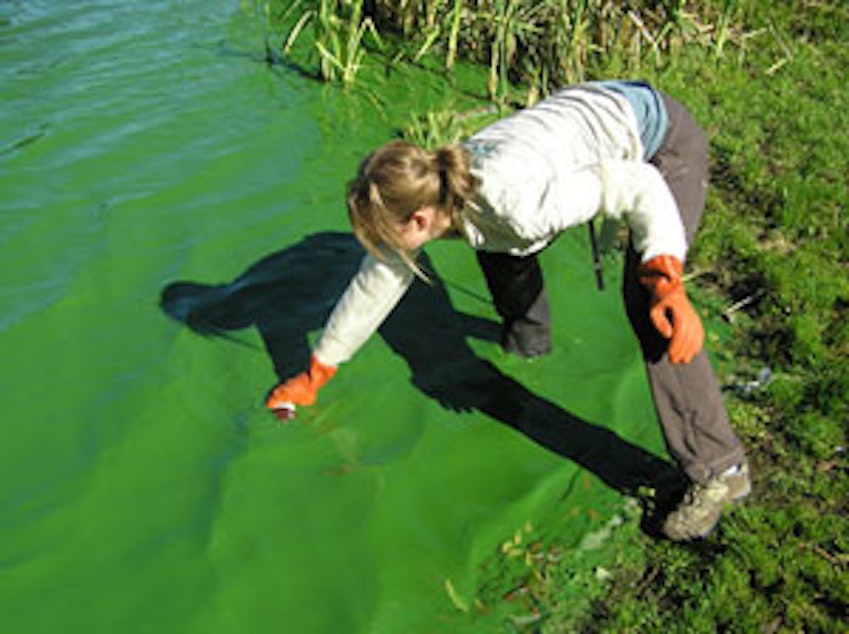Is that toxic algae? Washington officials warn: 'When in doubt, stay out.'

It's hot and you want to cool off. It's time to go to the lake. Before you jump in, officials are asking you to be aware of toxic algae blooming throughout the Northwest.
Toxic algae can make you very sick, and even be deadly. It's especially dangerous for pets and children. As air temperatures become warmer due to climate change, the growth of harmful algae may be favored over other non-harmful algae, according to the EPA. Toxic algae thrives in abnormally warm water temperatures, often above 77 degrees.
Rachael Gravon studies lakes and works with King County. Gravon explained three ways to stay safe.
- Before heading to the water check to see if there are any reports of algae blooming here.
- Once you get to the lake or beach keep an eye out for signage with warnings.
- Take a look around for patches of Algae.
Gravon says in general toxic algae is a thick slime with a blue and green color, but it can be difficult to identify. Look at examples here.
"The funny thing about algae is, some things look like algae and may not be algae. Some things may be algae and it may not be dangerous algae," said Gravon. "So our catch phrase is ‘When in doubt, stay out.’"
Sponsored
If you see suspicious water, you can submit a sample for testing. Request sample kits here. You can also collect samples using a 250-milliliter plastic bag or a glass jar (dark color or foil wrapped). Make sure the container is clean to avoid contamination! Gravon asks that people not use old peanut butter jars.
Safety comes first, so put some gloves on. When collecting, do not skim the water's surface. Hold the bottle just under the surface, allowing the water to fill up without air bubbles. Once the container is full, seal it tightly.
Gravon warns you not to store the sample in your refrigerator where it can contaminate your food. Instead you can put some ice in it. You can mail in samples or drop it off at the King County Environmental Laboratory.




